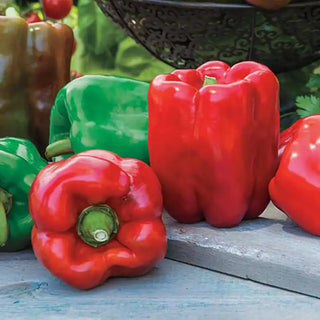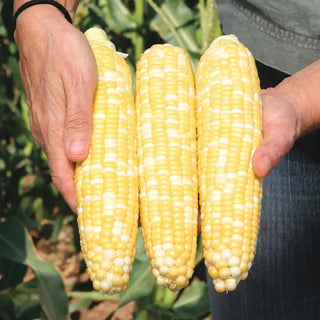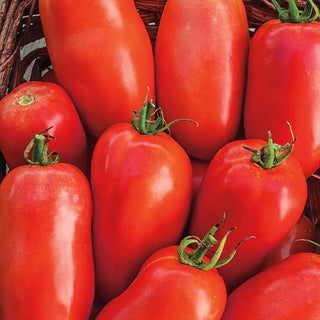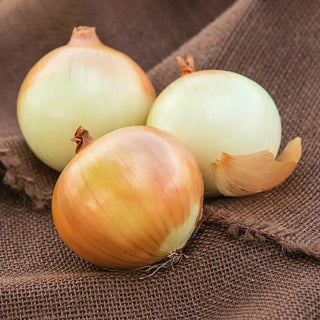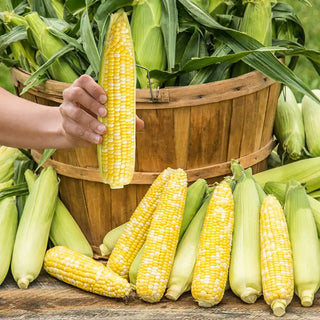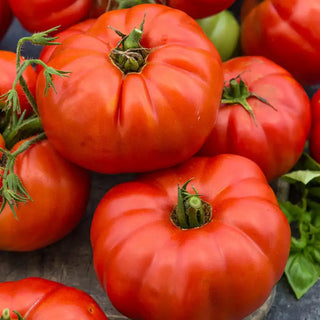Are you interested in the best vegetables to plant in your garden for the hardiness zone 5? Gurney's has you covered with our wide selection of quality annual and perennial vegetables in zone 5, from AsparaBest Asparagus to Black Magic Zucchini Squash. Learn how to add to and plant vegetables in your garden landscape, today!
When to Plant Zone 5 Vegetables?
Many garden vegetables grow well in zone 5. The vegetable planting season usually stretches from mid-March through October, depending on where you live in zone 5. Generally, the last spring frost date falls in April or early May and the first fall frost is sometime in October.
Most zone 5 gardeners start some vegetable seeds indoors and directly sow other vegetable seeds into the garden. Tender vegetables, such as tomatoes, peppers and eggplant, herbs and squash seeds are usually started indoors about 4-6 weeks before the last frost date for your area. Other vegetable seeds often started indoors include cole crops such as cabbage, broccoli and Brussels sprouts. Starting cole crops indoors allows zone 5 gardeners to harvest cole crops before the hot summer weather sets in.
Cool season vegetables such as lettuce, spinach, beets, carrots, kale, peas and potatoes are often directly sown outdoors in April. It's also a good time for planting onion sets.
Depending on where you live in zone 5, mid to late May is often a good time for directly sowing corn seeds, bean seeds, melons and squash. While cole crop seedlings can be transplanted about two weeks before the last frost date, plant tomato, pepper and eggplant seedlings after all danger of frost has passed.
Because sweet potato slips are cold sensitive, wait until a few weeks after the last frost date to plant them.
In late July and early August, fast-maturing vegetables such as lettuce, spinach, kale, radishes, peas, beets and carrots can be sown for a fall harvest. In July, you can also start broccoli indoors and transplant it for a late fall harvest.
How to Care for Zone 5 Vegetables?
Most vegetables need 6-8 hours of direct sunlight, about an inch of water weekly and fertile, well-drained soil.
Once your garden is planted and growing, these are a couple of tips for caring for your zone 5 vegetables.
- Inspect your plants several times a week for signs of disease and insect damage.
- Ensure that your plants get adequate water. During the hot days of summer or times of drought, rainfall may not be enough and you may have to water your plants.
- Keep your garden weed-free. Weeds can compete with vegetable plants for nutrients, choke out plants and spread disease.
- Fertilize your plants when needed. We recommend using slow-release, all-natural fertilizers.
- Mulching around your vegetable plants or between rows can help suppress weeds and retain moisture in the soil.
- Some crops may benefit from row covers. Row covers can protect plants from early spring or late fall frosts. Covers can also protect some plants from insect damage.
- Harvest vegetables before they become overly mature. Most vegetables are the most tender and flavorful before they reach full maturity.
What are the Best Early Spring Zone 5 Vegetables?
If you start cabbage, Brussels sprouts and broccoli plants indoors, you can transplant them to the garden in the spring about two weeks before the last spring frost date for your area. Some great vegetables for directly sowing into the garden in the spring are lettuce, spinach, beets, radishes, peas, onions and carrots. Both perennial asparagus and rhubarb perform well in zone 5 and return year after year. Early spring is also good for planting asparagus crowns and rhubarb.
What are the Best Zone 5 Winter Vegetables?
Because the first frost usually hits zone 5 in October, few vegetables can be grown in zone 5 in winter. If you use row covers, you can often extend the harvest of cool-weather crops such as lettuce, spinach, beets and carrots. Parsnips can also be harvested into winter, especially when mulched in the fall. Crops such as Brussels sprouts and kale are often sweeter if harvested after a light frost. Zone 5 is excellent for planting hardneck garlic bulbs in the fall and harvesting the following summer.






